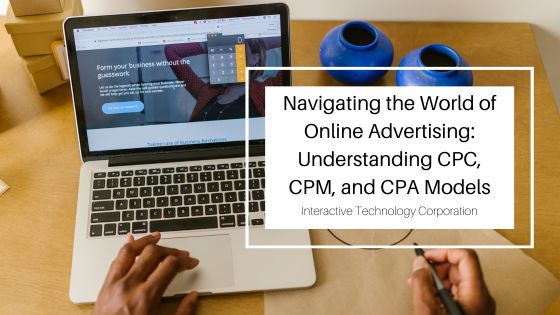In today’s digital age, online advertising has become an indispensable tool for businesses and marketers to reach their target audience effectively. With a myriad of advertising options available, understanding the various models used in online advertising is crucial to maximizing the return on investment (ROI) and achieving marketing objectives. Three of the most common pricing models are Cost Per Click (CPC), Cost Per Mille (CPM), and Cost Per Action (CPA).
Cost Per Click (CPC):
Cost Per Click (aka Pay Per Click or PPC) is a popular online advertising model where advertisers pay a fee each time a user clicks on their ad. This model is widely used on search engine advertising platforms like Google Ads and social media platforms like Facebook and Twitter. With CPC, advertisers have greater control over their budget since they only pay when a user takes a specific action by clicking on their ad.
The CPC model is especially advantageous when driving traffic to a website, increasing brand visibility, and generating leads. Advertisers can set their bid amounts, and the position of their ads on search engine result pages or social media feeds is determined by a combination of bid amount and ad relevance. Advertisers must carefully manage their campaigns and optimize keywords and ad creatives to achieve the desired outcomes while keeping costs under control.
Cost Per Mille (CPM):
Cost Per Mille, also known as Cost Per Thousand (CPT), is an advertising model where advertisers pay a fixed amount for every thousand impressions their ad receives. An impression refers to the number of times an ad is shown to users, regardless of whether they interact with it or not. CPM is commonly used for brand awareness campaigns when the primary goal is to maximize ad exposure to a broad audience.
CPM is prevalent in display advertising, where banner ads, video ads, and other visual formats are shown on websites, apps, or social media platforms. Advertisers with a strong visual message or brand image often prefer CPM since it allows them to reach a wide audience and increase brand recognition. However, it’s essential to carefully select the platforms and websites where the ads are displayed to ensure they reach the intended target audience.
Cost Per Action (CPA):
Cost Per Action, also known as Cost Per Acquisition, is an online advertising model where advertisers pay only when a specific action is completed by the user after clicking on the ad. This action could be making a purchase, filling out a form, signing up for a newsletter, or any other measurable conversion that aligns with the advertiser’s goals.
The CPA model is particularly attractive to advertisers because they only pay for tangible results, such as lead generation or actual sales. It places the responsibility of converting the user squarely on the advertiser’s website or landing page.
Navigating the world of online advertising requires a comprehensive understanding of the CPC, CPM, and CPA models. Each model offers unique benefits and is suitable for specific advertising objectives. CPC is ideal for driving traffic and achieving measurable engagement; CPM is best for broad brand exposure; and CPA allows advertisers to pay only for actual results. By carefully selecting the correct model and optimizing campaigns, businesses can harness the power of online advertising to reach their target audience effectively and achieve their marketing goals.

